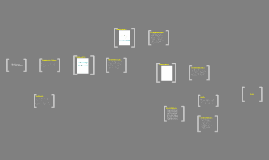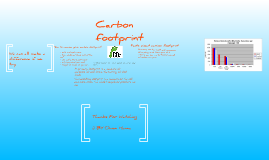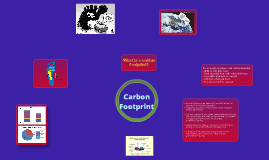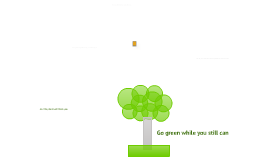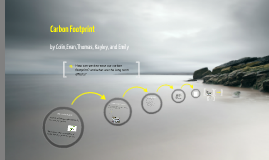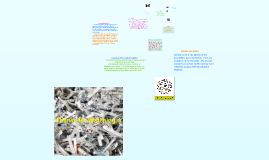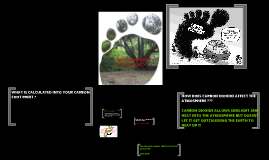carbon footprint
Transcript: My Carbon Footprint Part 2 What I Cut Out in Order to Reduce 2 General Information Back to the Driving Question The problems that windmills have are the noise pollution and the killing of birds. Some environmentalists believe that birds will fly into these large fan shaped windmills. There are many fields of windmills that cover the large amounts of room, and the birds might not be able to maneuver around the windmills. Noise pollution was a major concern with the building of the windmills. Folks that lived near windmills complained about how noisy the contraptions were. Hydrological energy was a bad thing for the environment, also. Creating a dam can stop natural flowing rivers reach the sea. Stuff like fish, logs, and other miscellanea objects falling with the flow of the water into the turbine. Solar panels were look down upon, because it was useless in the night time. Because solar panels do not store energy, it continuously releases energy until there is none left. My Carbon Footprint Part 3 Things that we can do to prevent this catastrophe from happening would be to do something right now. Taking actions into our own hands, we can be able to create more windmills, dams, and solar panels. In doing so the rate of consumption of non-renewables would be reduced, and the future of disaster would be that much farther from us. No matter what, we will run out of non-renewables. All we can really do is prepare for it, so we will not kill each other for non-renewable resources. What I Cut Out in Order to Reduce 1 The alarm clock was always set at 6:30am and left plugged into an outlet all day. Some items that were also plugged into an outlet were my video game appliances, my radio/CD player, and my computer. What I did was before I left for school I unplugged everything that was unnecessarily plugged into the outlets. Because the company that runs the electricity that goes through my house uses non-renewable resources like coal, they have to burn it causing chemical and thermal energy. On occasions we would eat out. It just happens to be on the same day as I was cut back on my carbon emissions. I told my parents about the project and why I was cutting back in carbon emissions. So that night we did not go out to eat. That cut out the majority of my carbon footprint. If I were to eat out, we would have to drive to the location of our desire and back home. Driving would cause petroleum to be burnt and release CO2 into the air. How we get petroleum is by going to the gas pump. How they get it is by shipping or trade. Before all of that geologists find where they thing the petroleum is, and the oil companies drill for it. The whole process is extremely time consuming and risky on the environment. Questions? When we run out of limited non-renewables how will the change of the rate of consumption of other non-renewables and renewables, our water use and availability, political policies, technoloical advancements , and our current lifestyles? The Driving Question For This Unit was... Alternatives In the mornings I would normally go to the Student Center and buy my breakfast. Buying breakfast means that I would have to spend my own money. There would usually be some type of meat with what I buy. The meat would most likely go back to meat being stored and refrigerated. To have meat to refrigerated, we have to have animals. Agriculture would need lots of water for animals alone. The animals need to eat also, so watering plants to provide for animals would also waist lots of water. Where they would get the water is the nearest large water source like rivers, watersheds, or transported water from a far land. Issues With Renewable Resources My Carbon Footprint Part 1 1. The company that my house uses energy from is Rutherford Electric Membership Corporation. 2. What the company uses to produce power is natural gas, propane, fossil fuels, coal, and diesel fuel. 3. I am unsure if there are any use of solar power, wind power, hydroelectric power, geothermal energy, biomass, or nuclear power that keeps my house lit. What I Cut Out in Order to Reduce 3 When we do run out of non-renewables, which we will, our society will panic. If there are any non-renewables that are left, people will be driven out of their homes so we can mine for it. One example of this is the civil war in the Democratic Republic of Congo. Because of this wewill have to move out of homes, pay higher prices for non-renewables, and use an extreme amount of non-renewables. The technology would have to upgrade to green machinery that produces energy in safer ways. Non-renewables would be use much more; because it is already running out we might as well use the rest of it. This will cause more pollution to the water crisis. Therefore water availability would be much difficult for us to sustain the same way we have been using water in today’s economical privileges. Ultimately all of these consequences will affect our everyday lives. Natural Resources & My Carbon






